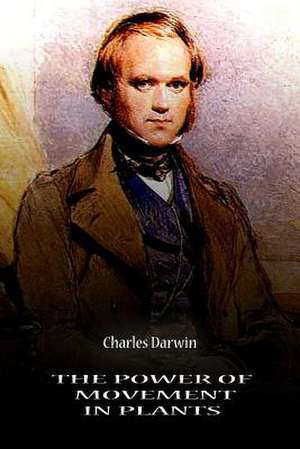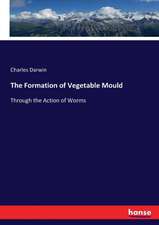The Power of Movement in Plants
Autor Charles Darwinen Limba Engleză Paperback
| Toate formatele și edițiile | Preț | Express |
|---|---|---|
| Paperback (6) | 132.33 lei 3 zile | |
| – | 132.33 lei 3 zile | |
| CREATESPACE – | 162.27 lei 3-5 săpt. | |
| CreateSpace Independent Publishing Platform – | 178.52 lei 3-5 săpt. | |
| Outlook Verlag – 8 ian 2012 | 539.02 lei 3-5 săpt. | |
| TREDITION CLASSICS – 31 oct 2011 | 302.09 lei 6-8 săpt. | |
| Cambridge University Press – 19 iul 2009 | 521.18 lei 6-8 săpt. |
Preț: 178.52 lei
Nou
34.16€ • 35.58$ • 28.48£
Carte disponibilă
Livrare economică 08-22 martie
Specificații
ISBN-10: 1478123788
Pagini: 604
Dimensiuni: 152 x 229 x 31 mm
Greutate: 0.8 kg
Editura: CreateSpace Independent Publishing Platform
Cuprins
Introduction; 1. The circumnutating movements of seedling plants; 2. General considerations on the movements and growth of seedling plants; 3. Sensitiveness of the apex of the radicle to contact and to other irritants; 4. The circumnutating movements of the several parts of mature plants; 5. Modified circumnutation: climbing plants, epinastic and hyponastic movements; 6. Modified circumnutation: sleep or nyctitropic movements, their use, sleep of cotyledons; 7. Modified circumnutation: nyctitropic or sleep movements of leaves; 8. Modified circumnutation: movements excited by light; 9. Sensitiveness of plants to light: its transmitted effects; 10. Modified circumnutation: movements excited by gravitation; 11. Localised sensitiveness to gravitation and its transmitted effects; 12. Summary and concluding remarks; Index.
Descriere
Written in collaboration with his son Francis, a notable botanist, this 1880 book builds on Darwin's earlier investigations into climbing plants, orchids, insectivorous plants, flower variety, and the processes of fertilisation. This detailed study of many species from seed to mature plant further develops Darwin's work on adaptation and evolution, with the aim of collating the results of individual studies into common factors applicable to plants in general. Particular emphasis is given to analysis and investigation of the process here termed circumnutation, the movement of the stem of the plant in order to direct the head in certain directions. This is seen as of paramount importance, with the conclusion that it is modification of this feature that has enabled plants to adapt and evolve so diversely. The authors also note similarities between plants and animals, such as sensitivity to touch and habit of action at certain times.
























